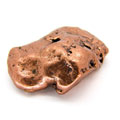If lightning strikes an unguarded home, the power surge is likely to be passed throughout the electrical wiring, frying delicate circuits in stereo systems, computers, telephones, and other electronic appliances. It not only destroys the equipments, but can possibly harm anyone who happens to be touching one of these otherwise benign devices.

Protect Your Home Electrical System from Power Surges
Electrical surges take place more often than most homeowners realize, and not only as a result of a lightning strike. In fact most surges, are caused by routine electrical switching operations at local utilities or nearby industrial facilities. Where majority homes typically experience up to 2,000 surges a year-an average of six per day. So unless your home is adequately protected, these spikes can damage your sensitive electronic circuits, including those in telephones, computers televisions and other electronic equipment.
Every dwelling or habitat needs more protection from surges, especially if it's in an area where thunderstorms frequently occur. And for this reason fortunately, devices are available to safeguard not only your incoming electrical line, but also other vulnerable entry points such as telephone lines and television cable or antenna wiring.

A three-tiered strategy is recommended. The first line of defense consists of lightning and transient high-voltage spike protection devices, known as "transient voltage surge suppressors." They are commonly used in agricultural, commercial and industrial buildings, whereas inexpensive versions are available for homes, as well. Installed at the electrical meter or service panel, these devices respond robotically to suppress any incoming voltage surge, reducing the power to a lower voltage level by diverting part of it to ground. They protect the whole electrical system "downstream" of the installation point. Since very powerful surges, especially lightning, can strike any incoming wiring, experts recommend buying a multiple- connection unit that simultaneously protects telephone, coaxial cable and antenna wiring for televisions, stereos and home computers.
Copyrights © 2019 Modison Copper Pvt Ltd | All Rights Reserved.
Site By Spenta Digital



